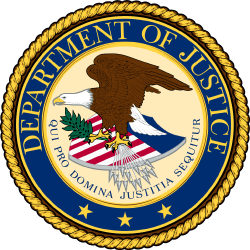A small team’s journey through digital maturity
As a small team, Digital.gov adopted user research and customer experience early. That foundation helps develop evidence-based strategies for today.
As a small team, Digital.gov adopted user research and customer experience early. That foundation helps develop evidence-based strategies for today.
To help agencies evaluate the accessibility of their digital products, GSA is making it easier to create Accessibility Conformance Reports through its new OpenACR Editor.
The summit highlighted digital transformation, emphasizing the significance of recent OMB memos for improving accessibility and customer experience.
More Veterans are turning to the U.S. Department of Veterans Affairs (VA) for healthcare and benefits, accessing these services online through tools like the VA Health and Benefits mobile app and VA.gov. With over 2.28 million app downloads and 17.8 million monthly visitors on VA.gov, these digital tools provide faster, easier, and more inclusive access to VA services. Learn more about how these technologies are often Veterans’ first interaction with VA by watching their latest video, Digital Front Door: Expanding Access to VA.— via U.S. Department of Veterans Affairs

Optimizing federal service touchpoints involves analyzing both actively-sought and spontaneous feedback, introducing new metrics and data points.
The federal government is actively discussing the transformative potential of artificial intelligence (AI). It has the potential to transform our digital service delivery, automate tasks, and enhance data analysis. However, AI also presents challenges and risks such as bias and ethical concerns. The team at 18F provides a quick overview of AI, its place in government today, and the techniques and frameworks they are currently using to navigate this complex new landscape.— via 18F

The U.S. Navy’s Program Executive Office for Digital and Enterprise Services is working to revolutionize how information technology is acquired.
In 2021, the President’s Management Agenda identified federal customer experience as a priority area for improvement. To implement this priority area, the Office of Management and Budget (OMB) set two long-term, cross-agency priority (CAP) goals. In this study, the Government Accountability Office (GAO) reviews OMB and selected federal agencies’ efforts towards these CAP goals. Learn about actions taken by OMB and selected High Impact Service Providers (HISPs), how OMB has facilitated interagency collaboration, and the extent to which OMB has overseen and assessed progress on these CAP goals.— via Government Accountability Office

At the Department of Justice, Access DOJ and the Office of the Pardon Attorney (PARDON) partnered to simplify and streamline the presidential pardon application process. By conducting usability testing and gathering feedback, they identified key issues with the existing application, such as its complexity and length. See how redesigning the forms to be more accessible and understandable led to a more efficient process for both applicants and staff.— via Department of Justice

The Department of Justice’s U.S. Trustee Program (USTP) oversees the administration of bankruptcy cases and private trustees. During the COVID-19 pandemic, virtual Section 341 bankruptcy meetings lead to more participation from both consumers and creditors, minimized delays, and saved time and money for all. Learn about USTP’s human-centered design process for a pilot program in three states to increase public access to these virtual meetings.— via Department of Justice

Launched last fall, the General Services Administration equity study on remote identity proofing aims to determine if biases exist in the algorithms used for online identity verification. The study has now reached its goal of recruiting 4,000 participants from diverse communities, and experts are ready to begin analysis of the data. Learn how the team at GSA plans to conduct this data analysis, and how their findings will lead to improved equitable services delivery in technology across the government.— via General Services Administration

At USA.gov and USAGov en Español, the goal is to make content more useful to the public, and meta descriptions are one way to help people quickly find the government information they’re looking for. These brief summaries of webpage content appear in search engine results to entice users to click through, attracting visitors to agency websites. Regularly updating these descriptions based on user data can enhance their effectiveness. Read in more detail about their three tips to create effective meta descriptions: identify commonly searched keywords, write engaging and actionable descriptions, and ensure each one is unique.— via USA.gov

The Federal Risk and Authorization Management Program (FedRAMP) has recently updated its governance structure to better serve its customers. Learn about their recently-formed FedRAMP Board, composed of federal executives; the FedRAMP Technical Advisory Group (TAG), composed of technology experts; and updates made to the Federal Security Cloud Advisory Committee (FSCAC). These groups collectively aim to strengthen and expand FedRAMP’s cloud service capabilities.— via FedRAMP

The General Services Administration (GSA) employs nearly 12,000 people who provide services to federal agencies and the public, and has been recognized as one of the top federal agencies to work for, emphasizing a people-first culture. Through the Tech to Gov initiative, GSA’s Technology Transformation Services (TTS) has successfully recruited top tech talent to enhance digital government services. Get to know some of GSA’s newest technologists.— via General Services Administration

How to engage leadership personally, adapt communication styles, and choose appropriate timing for effective interactions and feedback.
In FY23, 10x doubled down on its commitment to creating solutions that serve the American public by investing in projects that aligned with the themes: Digital Foundations and Equity in Delivery. The team celebrated key wins with projects like Automated Security Authorization Processing (ASAP), and are very hopeful that newer projects, such as Digital Access to Justice, will make a difference. Explore what they did, where they’re going next — and what was learned along the way.— via 10x

It has been a year since USA.gov and USAGov en Español were relaunched using human-centered design principles. Using task backlog, the USAGov team has addressed content gaps, improved discoverability, and implemented technical updates. Through usability tests, visitor comments, and click behavior the team was able to unravel and respond to user feedback and unmet needs, leading to noticeable increases in visitor satisfaction and task accomplishment. Moving forward, the focus will shift to enhancing public engagement with the government, improving the search for benefits-related content, and exploring interactive and personalized user experiences.— via USA.gov

The Federal Emergency Management Agency Office of External Affairs is convening risk and crisis communicators and community leaders who are on the front-line of the climate and emerging hazard crises. Attend the free, June 10, 2024, summit virtually, or in Washington, DC. The agenda includes: the sharing invaluable tools and insights, how to implement culturally competent and accessible communications, how to integrate behavior change strategies, and more. An ASL interpreter will be provided.— via Federal Emergency Management Agency

Digital.gov
An official website of the U.S. General Services Administration